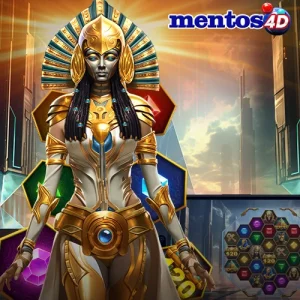Introduction: Games have been an integral part of human culture for millennia, serving as a means of entertainment, social interaction, skill development, and even education. From ancient board games like Senet and Go to modern digital marvels like Fortnite and Minecraft, the landscape of games has evolved significantly. Yet, despite the technological advancements and the emergence of new platforms, the essence of games remains the same: to engage, challenge, and immerse players in new worlds of imagination and competition.
The Evolution of Games: The history of games is a testament to Mentos 4d human creativity and ingenuity. Archaeological findings suggest that games have been played since prehistoric times, with evidence of board games dating back over 5,000 years. These early games not only provided entertainment but also served as a reflection of societal values and beliefs.
With the advent of technology, games entered a new era of innovation. The invention of the printing press enabled the mass production of board games, making them more accessible to people of all social classes. In the 20th century, the rise of electronic and digital technologies gave birth to video games, revolutionizing the way we play and interact with games.
The Modern Gaming Landscape: Today, the gaming industry is a multi-billion dollar behemoth, encompassing a wide range of genres, platforms, and audiences. From casual mobile games to hardcore esports competitions, there is something for everyone in the world of gaming. The proliferation of smartphones and high-speed internet has further democratized gaming, allowing players to connect and compete with others from around the globe.
One of the defining characteristics of modern games is their ability to tell compelling stories and create immersive worlds. Games like The Witcher 3: Wild Hunt and Red Dead Redemption 2 are hailed for their rich narratives and expansive open worlds, blurring the lines between gaming and storytelling.
Furthermore, the rise of virtual reality (VR) and augmented reality (AR) technologies has opened up new frontiers in gaming, allowing players to experience games in ways previously unimaginable. Whether exploring fantastical realms in VR or battling virtual monsters in AR, these immersive technologies promise to redefine the future of gaming.
The Social Aspect of Gaming: While games are often seen as a solitary activity, they also have a strong social component. Online multiplayer games like World of Warcraft and League of Legends bring millions of players together in virtual worlds, fostering friendships and communities that transcend geographical boundaries.
Moreover, gaming has become a cultural phenomenon, with events like E3 (Electronic Entertainment Expo) and TwitchCon drawing thousands of fans from around the world. Esports, or competitive gaming, has emerged as a legitimate spectator sport, with professional players competing for millions of dollars in prize money and millions more watching from the comfort of their homes.
The Educational Value of Games: Beyond entertainment, games also have the potential to educate and inform. Educational games, or “edutainment,” leverage the interactive nature of games to teach a wide range of subjects, from math and science to history and language arts. By making learning fun and engaging, these games have the power to inspire curiosity and foster a lifelong love of learning.
Conclusion: In conclusion, games have come a long way since their humble beginnings, evolving from simple pastimes to complex interactive experiences. Whether played on a board, a console, or a smartphone, games have a unique ability to captivate and inspire players of all ages. As technology continues to advance and new platforms emerge, the future of gaming looks brighter than ever, promising new adventures and experiences for generations to come.